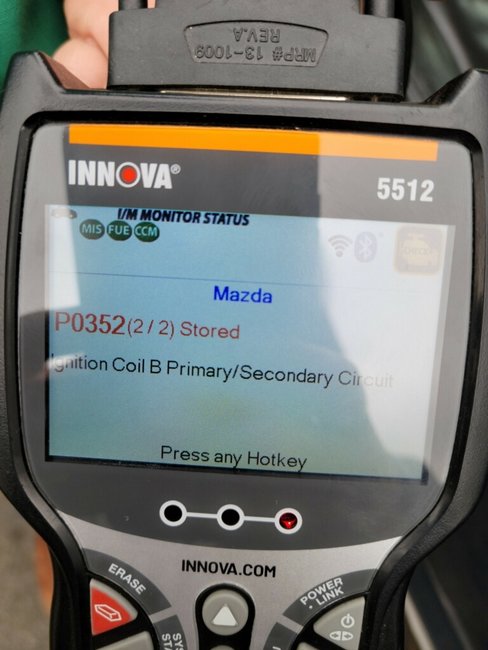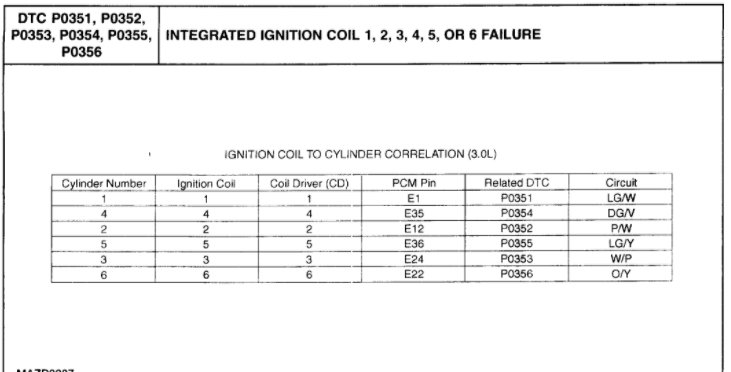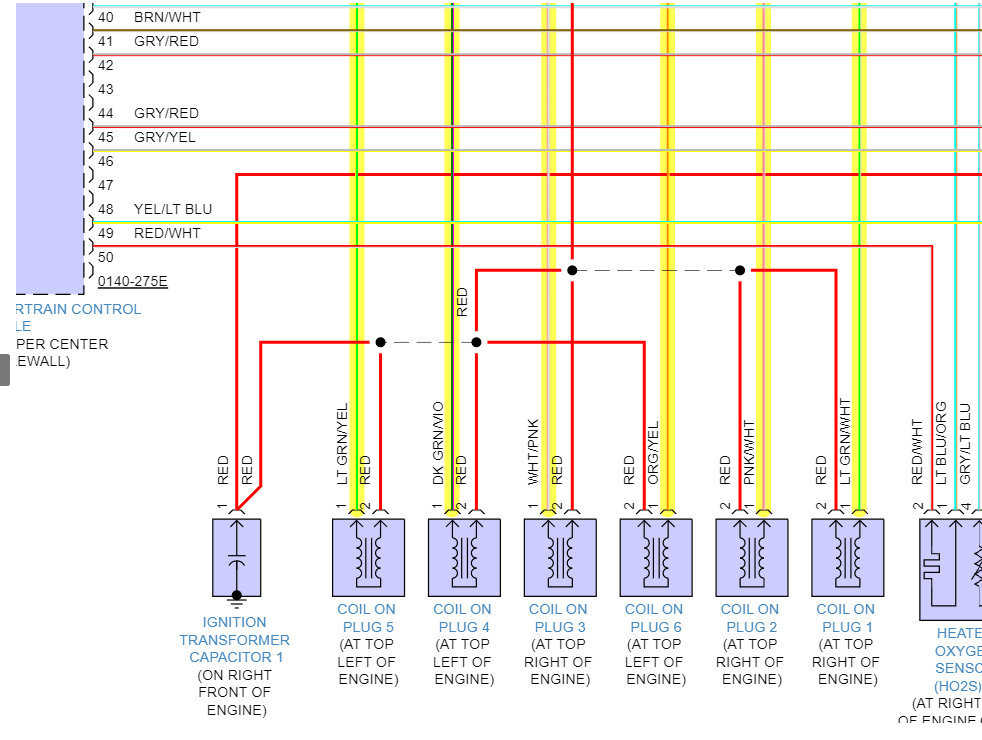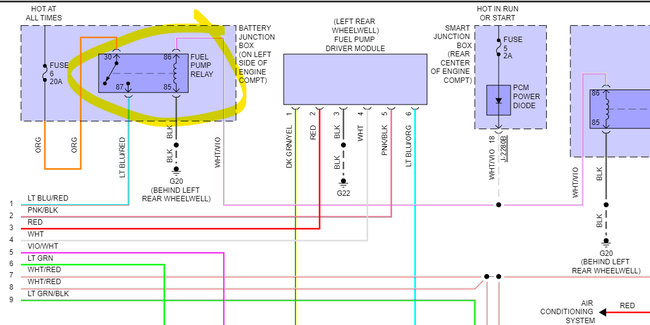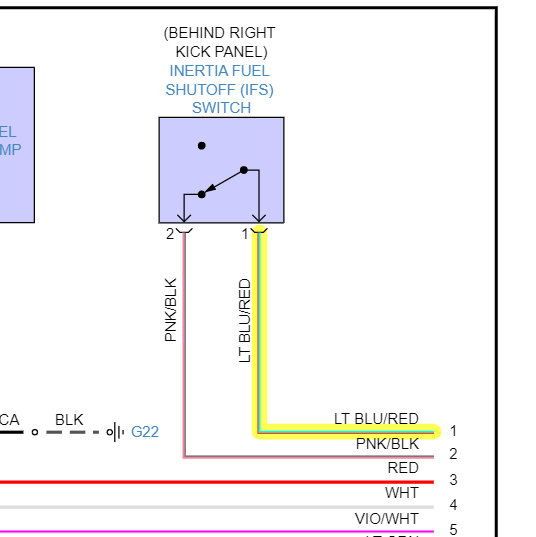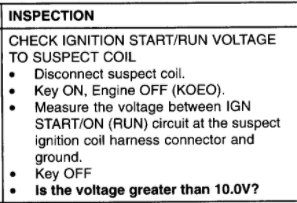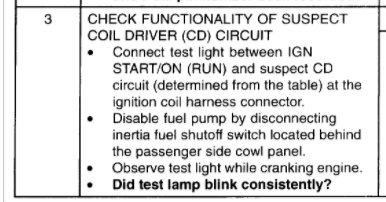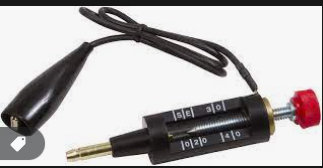Well, if you have the old original coils you took off, obviously you were having misfiring issues and possibly misfire codes. If you take the old coils and set your multimeter on the Ohms setting and go across the 2 pins of an Ignition coil, you will get the resistance reading of the coils primary circuit. The primary circuit is battery power on one pin of the coil and the ECM will ground the other pin for about 1-2ms. When it releases the ground from the primary side of the coil, the magnetic field in the primary collapses and this induces extremely high voltage into the secondary circuit (thousands of volts) out through the spark plug. Just to explain how this all works.
I did find out that the P0351 and P0352 are cylinders 1 and 2. Also included a wiring diagram for the ignition coils. The red wire is the battery feed to each coil. so, at Key On engine off, you should have 12volts on each red wire at each coil.
If you have a 12volt automotive test light, this is the easiest way to check these, also a "spark tester" that you can just attach to the end of the coil to see if you have any spark at all from cylinders 1 and 2. You should pull the Fuel Pump Relay or Trip the Inertia Switch so that you don't have any fuel pressure. It's not needed for checking spark and you don't want to be dumping any more raw fuel down the exhaust to the Catalytic Converter. Thats how they get ruined and eventually melt down and clog up the exhaust.
So, on cylinders 1 and 2, unplug the coil and just touch the connector pin and check for battery power on the red wire first, Key On engine off. Don't jam the test light into the coils harness plug. it will spread the pins.
Next take your test light and hook it to battery positive, unplug the coil that has a red wire and a light green/white wire, that's cylinder #1.
With the fuel system disabled, just touch the test light to the light green/white wire on the coil harness connector and have someone crank the engine over for you. The test light should flash, because remember that the ECM grounds that wire to fire the ignition coil. So, if the 12-volt test light flashes, that means the ECM is controlling the ground wire at that coil. If it doesn't flash, that means that the ECM is has no control over the coils ground side. The driver has been damaged.
You can do this on cylinder #3 to see the test light flash to get the idea. But its very easy.
Test light on battery positive, let the ECM control the negative side, test light should flash.
Some people will test an ignition coil by having the spark jump to the test light hooked to battery negative, but I don't recommend this unless you really know what you're doing. There are thousands of volts coming out of these coils, especially the COP (coil over plug) design. They can push up to 30k volts.
If you have any questions before you run any tests just ask first.
The last picture is the kind of spark tester I use, connect to the end of a spark plug wire or coil, clip to ground. Crank the engine.
https://www.2carpros.com/articles/how-to-test-an-ignition-system
https://www.2carpros.com/articles/how-to-use-a-test-light-circuit-tester
Images (Click to make bigger)
Saturday, March 19th, 2022 AT 8:52 PM
